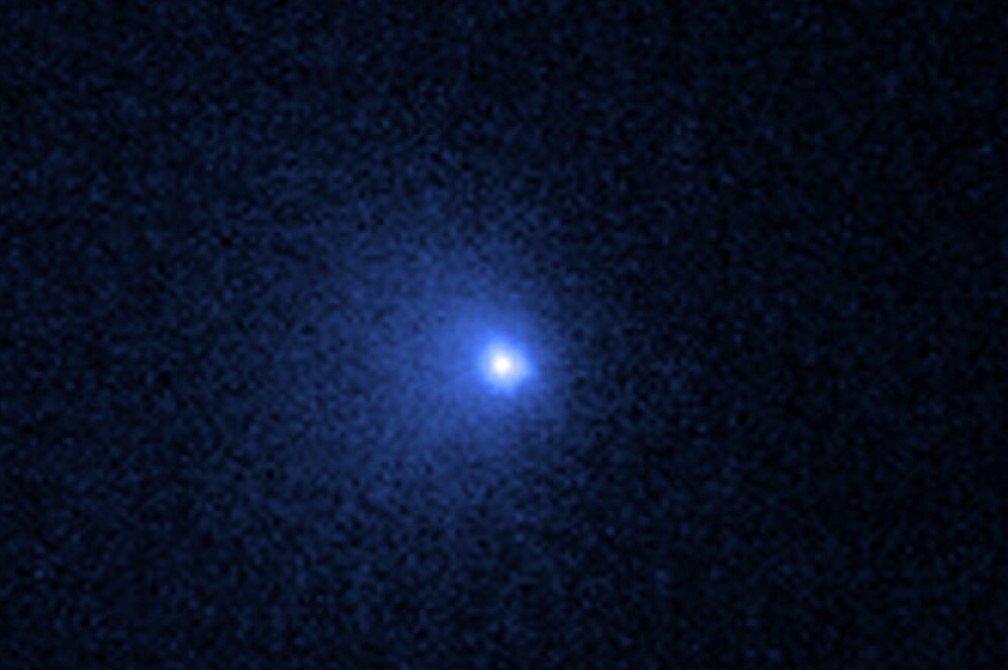It’s 85 miles wide, which is larger than the US state of Rhode Island. And it’s coming this way.
Nasa has spotted a record-breakingly large comet headed nearer to Earth.
Its icy nucleus is bigger than any ever seen – measuring around 80 miles across, and 50 times bigger than the heart of most known comets. It is also thought to have a mass of about 500 trillion tons – a hundred thousand times more massive than the typical comet found closer to the Sun.
And the object, known as C/2014 UN271 (Bernardinelli-Bernstein), is headed in this direction, quickly. Travelling at 22,000 miles per hour, it is moving from the edge of the solar system towards its the center.
Preparedness: Protect your home and car with the best lightning and EMP protection available…
However, we should be entirely safe. The comet will not get closer than a billion miles from the Sun – further away even than the planet Saturn – and that will not happen until 2031.
The object has been known about since November 2010, at which point it was 3 billion miles from the Sun or the distance to Neptune. Since then, researchers have been looking to understand more about it, using telescopes both in space and on Earth. As part of that research, scientists used NASA’s Hubble Space Telescope to estimate the size of the comet, and revealed its huge size.
Source: Strange Sounds
Researchers had thought that the comet must be at least reasonably large, given how active it is even at such a long distance from the Sun. But the new data came from five photos taken earlier this year by Hubble.
However, measuring the size is not as simple as taking those images. Scientists must distinguish the solid nucleus at the middle from the large dusty coma that wraps around it, and it is too far away for the images to be clear enough to tell the difference.
Instead, scientists looked at the bright dot of light that marked the nucleus at the heart of the comet. They then made a computer model of the coma that would surround it and adjusted it in line with the images.
Taken together, those images allowed the size to be understood. Researchers could subtract the glow of the coma and leave only the solid nucleus behind.

The data also reveals more about the comet, when it is combined with other radio observations taken from the ALMA telescope in Chile. The sizes were the same, but the data suggests that the comet’s surface is darker than previously thought – with one researcher describing the object as “big and it’s blacker than coal.“
Get a satellite phone to communicate with your loved ones when internet and phones are down…
The comet is billions of years old, and as such represents a relic from the early days of our solar system. It came from the Oort Cloud at the edge of our planetary neighbourhood, and has been falling back towards our Sun for at least a million years.
The comets of the Oort Cloud are thought to have begun life much closer to our star. But in its early days, they were thrown out to the edges of the solar system during the more chaotic early days of the solar system, when the massive outer planets were still finding their orbits.
The new record-breaking object could help us better characterise that Oort Cloud, which sits as far as 5,000 times away from our Sun as we do and is so difficult to see directly that it remains theoretical. By studying the Comet Bernardinelli-Bernstein, researchers can better understand how the objects in that distant cloud size up, for instance – and how large it could be.
The findings are reported in a new paper, ‘Hubble Space Telescope Detection of the Nucleus of Comet C/2014 UN271 (Bernardinelli-Bernstein)’, published in The Astrophysical Journal Letters.
Could this be another interstellar object that entered our solar system? [APJ, Independent]



